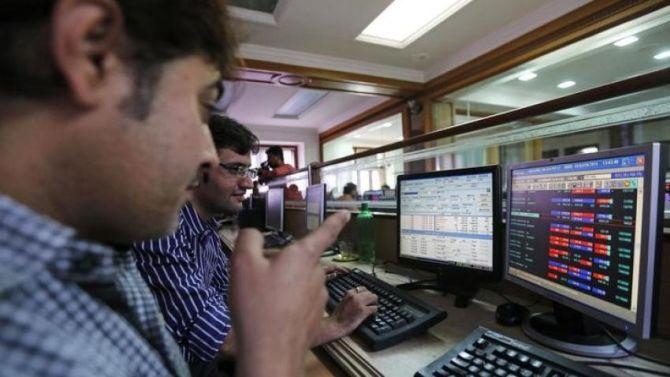 | « Back to article | Print this article |
The volume of shares traded in the stock market had fallen 28 per cent in April. Turnover, or the value of securities changing hands, fell 12.6 per cent. This trend of falling volumes seems to have stabilised in May.

Traders using stock market algorithms have found respite as volumes start to stabilise, after a sharp drop in activity during the early parts of the lockdown.
Algorithmic trading typically refers to the use of electronic systems, programmed with trading rules designed to exploit the smallest opportunities to make a profit.
Algorithms can execute thousands of trades in the blink of an eye, but they need counterparties to these orders, especially in less-traded stocks.
Many counterparties had been out of the market as indices crashed because of COVID-19 and logistical issues in the aftermath of the lockdown.
The volume of shares traded in the stock market had fallen 28 per cent in April.
Turnover, or the value of securities changing hands, fell 12.6 per cent.
This trend of falling volumes seems to have stabilised in May.
So far this month, average volumes and trades have fallen only marginally when compared with the drop seen in April.
Algorithmic traders had found liquidity issues cropping up earlier, which have now improved, according to Hitesh Hakani, director of Greeksoft Technologies, which is involved in algorithmic trading solutions.
For example, he said, if there were 10 counterparties earlier for a given trade, this would have dropped to one.
This, in turn, could have an impact on the prices at which trade is carried out.
The lower the volume, the more the impact cost.
Essentially, buying and selling both happen at worse prices than one would find in a normal market.
High-frequency trading works best when there is high volume and high volatility, according to Kunal Nandwani, founder and chief executive officer, uTrade Solutions, which has clients involved in algorithmic trading.
He said there had been a fall in volumes, but a rise in volatility.
Increased volatility can often compensate to a certain extent for the fall in volumes, he added.
The India VIX hit a 52-week high of 86.6350 on March 24.
A report on algorithmic trading by the National Institute of Financial Management, submitted to the Department of Economic Affairs, found algorithms accounted half the orders on the NSE and the BSE.
Photograph: Shailesh Andrade/Reuters